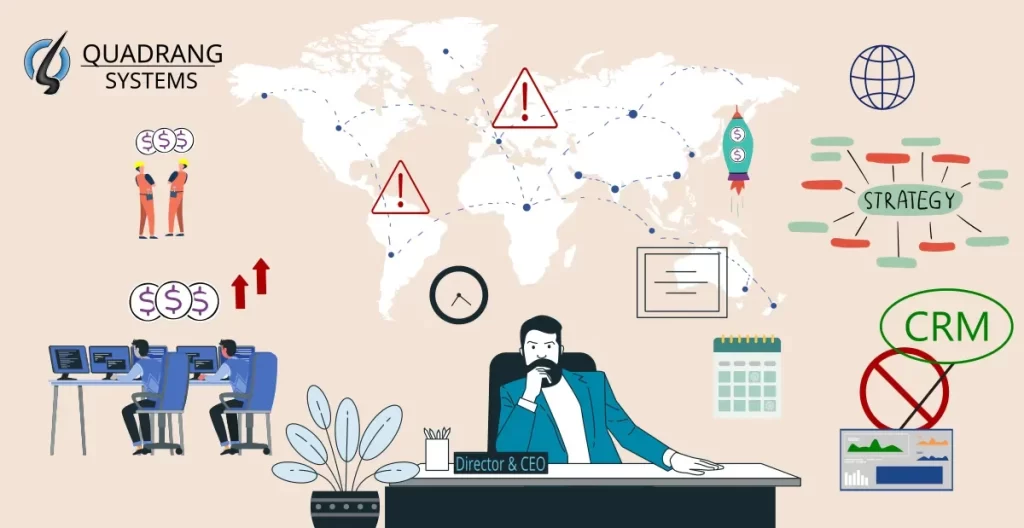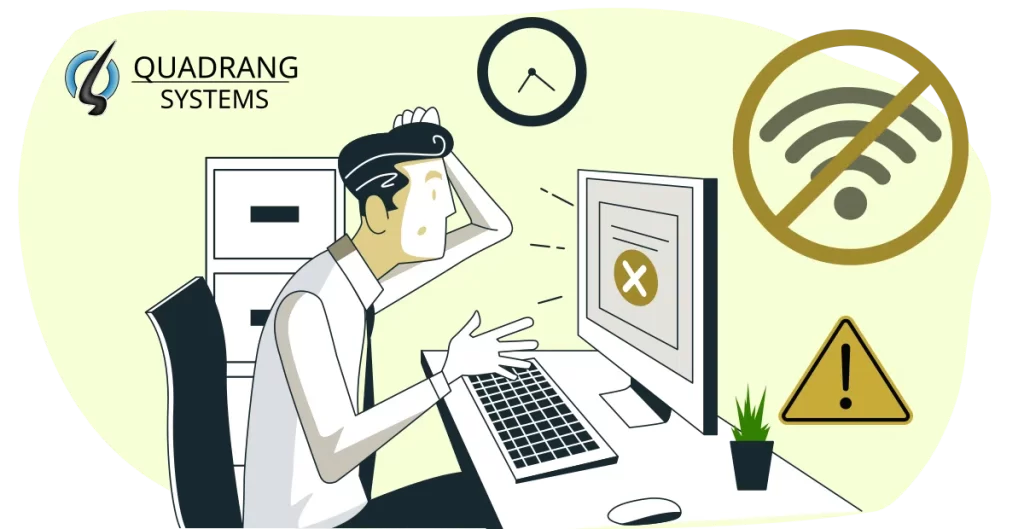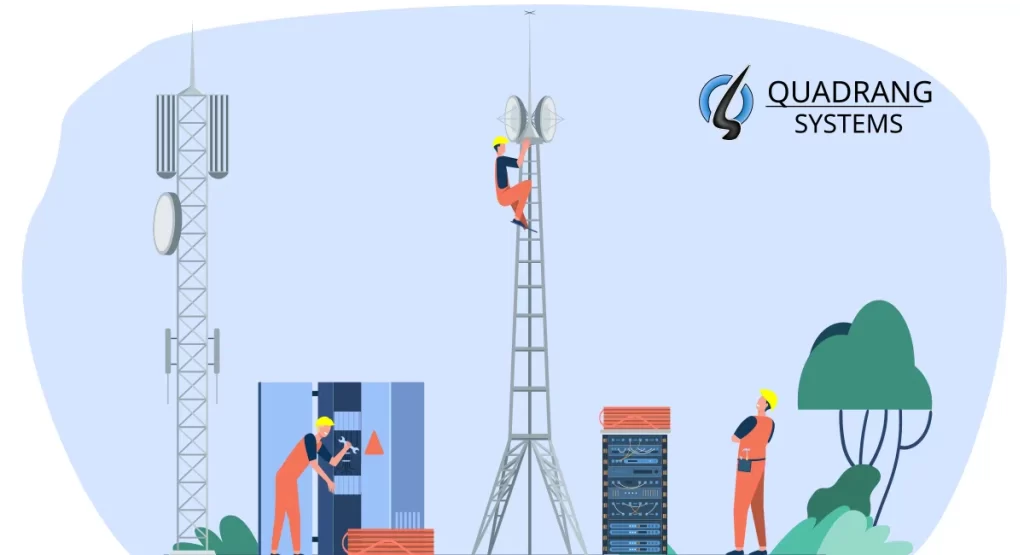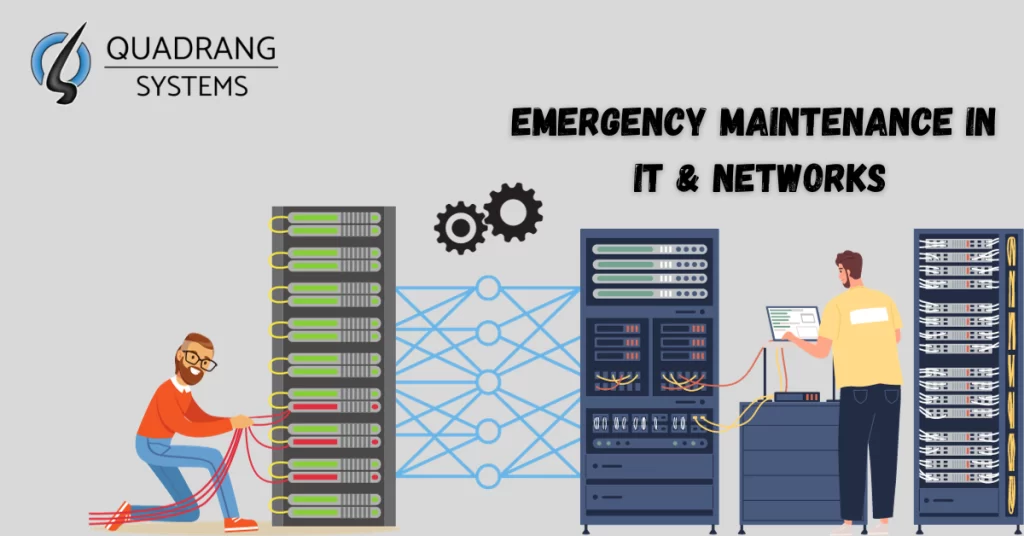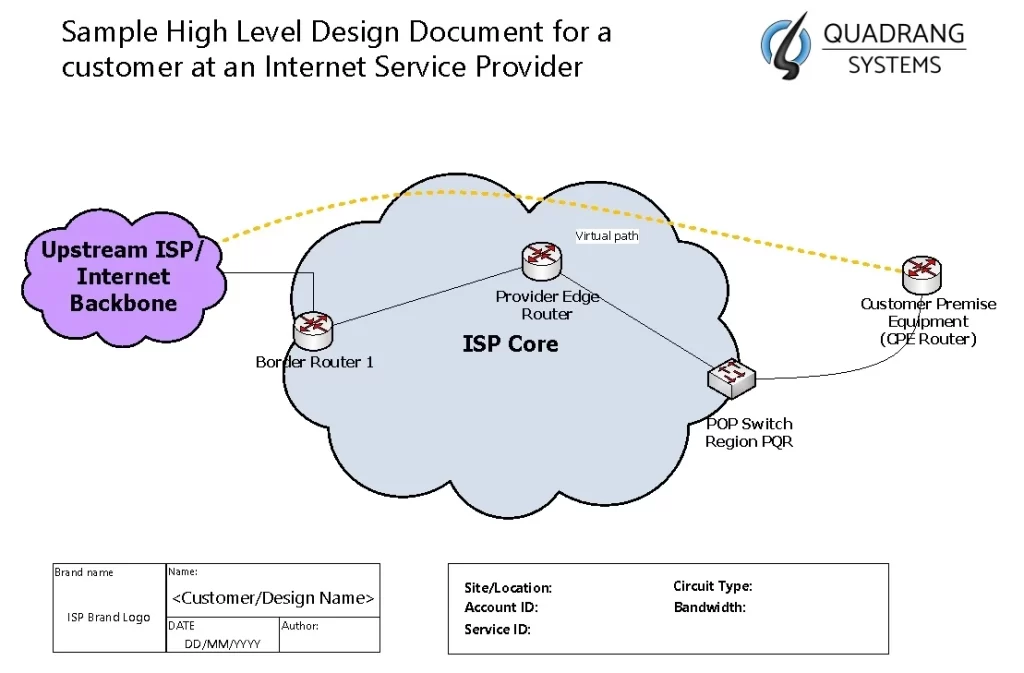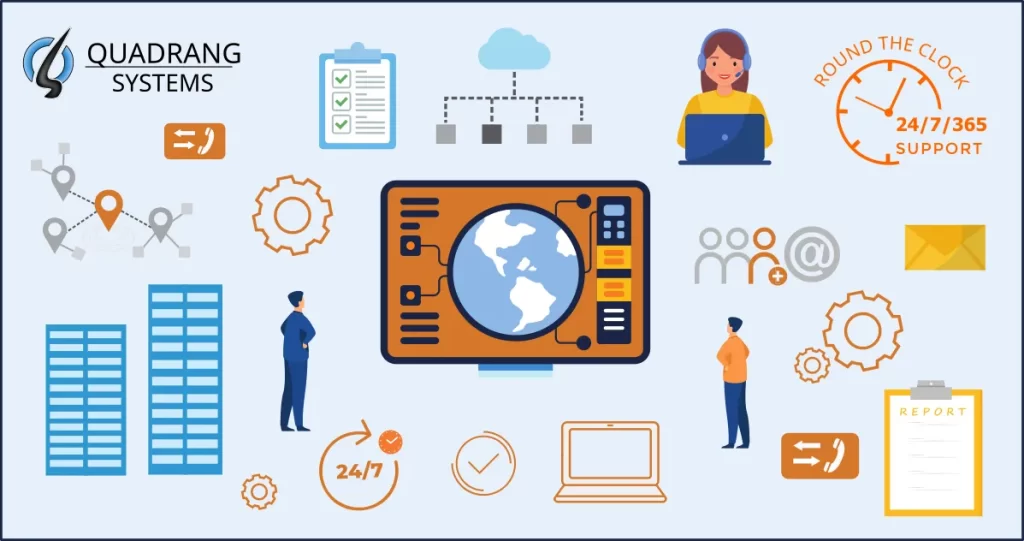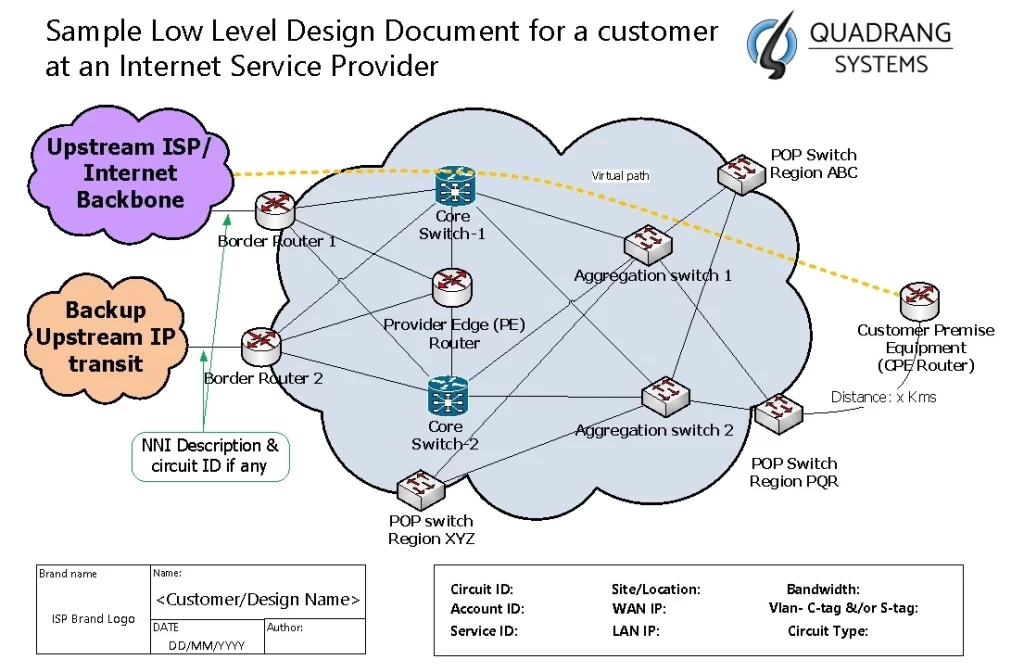Concerns and Challenges of Internet Service Providers
The provision of reliable, high-quality internet access is no simple task. Internet service providers (ISPs) face an array of concerns and challenges that impact their operations, expenses, and customer experiences each day. Fragmented customer relationship management (CRM) systems, integration difficulties, internal communication gaps, manual processes, and costly network infrastructure top the list of pressing issues. However, solutions exist to conquer these obstacles. This article may not be applicable to “All ISPs”, but this article explores top concerns for ISPs and actionable ways to move forward.
1) Outdated, Fragmented CRM Systems
Many ISPs rely on outdated or fragmented customer relationship management (CRM) systems ill-equipped for the unique operational needs of internet providers. Generic CRM platforms fail to capture intricate details of service installations, infrastructure, and subscriber hardware. Without customizable fields, scripts, error tracking, and automated workflows specifically designed for ISP offerings, agents lose productivity. Meanwhile knowledge gaps form between support teams. Steps to modernize CRM capabilities include:
- Seek a next-generation CRM delivering customized experiences through the entire subscriber lifecycle. Prioritize automation for common requests like usage reporting, bill questions, speed tests, and popular how-tos.
- Design customized ticketing fields, error logs, troubleshooting flows, and notification triggers purpose-built for internet delivery infrastructure. Capture hardware details, map signal levels, synchronization rates, IP mappings, and other key metrics.
- Enable self-service account management through subscriber portals to reduce manual support volume. Offer 24/7 accessibility to billing controls, equipment inventories, speed tests, and other account tools.
- Develop customized scripting, tracking, and automation for presales interactions in the CRM as well. Maintain seamless hand-offs between presales and installation/support teams.
- Ensure executive visibility into subscriber analytics through intuitive CRM dashboards.
2) Lack of Integration Between Systems
Too often, ISPs rely on disjointed systems for infrastructure monitoring, customer support ticketing, and overall network management. Yet the interdependencies between network operations, customer experiences, and infrastructure performance mandate real-time integration. Steps to unify traditionally siloed systems include:
- Invest in consolidated platforms that interconnect fault management, monitoring, help desk, and subscriber analytics. The connectivity of data enhances correlation capabilities, event triggering, and optimization recommendations.
- Develop comprehensive APIs or plugins to weave data exchanges between legacy platforms if upgrades are not possible in the short-term.
- Present field technicians, customer support representatives, and NOC operators with a unified and contextual view of subscribers’ technical profiles, configurations, active requests, and recent network behaviors.
- Enable automated creation of support tickets from monitoring platforms during service outages or quality degradation.
3) Disconnections Between Teams
Given the technical complexity of internet services, gaps in understanding often form between frontline and behind-the-scenes teams. Sales representatives may convey inaccurate setup timelines or infrastructure requirements while field technicians grow frustrated with incomplete work orders. Steps to align presales, post-sales, NOC, and engineering groups include:
- Foster cross-departmental meetings to facilitate knowledge transfer about technologies, systems, policies, routes to market and more.
- Incentivize collaborative contributions across siloed teams such as shared metrics or rewards programs.
- Structure sales engineering, solutions architect and pre-sales engineer roles to solidify technical insights within customer-facing engagements.
- Embed engineering personnel within sales campaigns to cultivate Prospective customer dialogues and demystify fulfillment dependencies.
- Ensure field technicians have visibility into subscribers’ rate plans, entitlements and active requests to improve on-site experiences.
4) Lack of Customer Service Automation
Mundane outreach such as service outage notifications, appointment confirmations, and firmware release alerts demand automation to contain expenses and frustrate subscribers. Tactics to reduce reliance on manual efforts include:
- Centralize subscriber contact data, communication preferences, and consent options to feed customer service automation platforms.
- Configure trigger-based email and SMS campaigns for high-volume scenarios like network events, maintenance updates, expiring promotions, routine equipment notices and more.
- Enable web portal and mobile app capabilities for self-service notifications.
- Build IVR scripts for automated outbound calling.
- Generate support ticket notifications as cases progress through statuses like assigned, escalated, resolved etc.
- Create customized field service automation to handle dispatch confirmations, reminders, technician arrival alerts and feedback requests.
- Consolidate network management & CRM software under a single solution to simplify administration while improving visibility,historical insights, threshold policies and topology mappings.
5) Costly 24/7 Network Operations
The material and labor costs sustaining today’s internet infrastructure notably inflate ISP overhead. Options to streamline network costs range from technology upgrades to process improvements:
- Regularly renegotiate transit and peering arrangements leveraging latest traffic volumes.
- Continually evaluate next-generation equipment and hardware upgrades which are cost effective, more efficient balancing capacity and sustainability improvements.
- Expand software-defined networking to boost flexibility, automation and insights from the core to network edge. Emphasize on the use of TR-069 autoconfig and SD-WAN as CPE
- Try and see if outsourcing your 24/7 to outsourced NOC can help in improving support and reduce network downtime. Disclaimer: We at Quadrang Systems do help ISPs setup an outsourced and dedicated 24/7 NOC team. Contact us to know more
- Streamline technician training and leverage AR-assisted field tools to expedite complex installations, maintenance and repairs.
- Conduct periodic assessments for process bottlenecks within provisioning, installation, and support functions.
6) Expensive Field Operations
The hiring, training, scheduling, and management of dispersed, skilled field technicians imposes monumental costs for ISPs. Simultaneously, subscriber expectations for rapid installations and near real-time outage resolutions continue rising. Multifaceted initiatives to control field service delivery expenses include:
- Track analytics like jobs per day, on-site times, parts usage, and customer satisfaction ratings to optimize staffing, training, and scheduling.
- Schedule technicians through geography and territory mapping algorithms and by creating waypoints for visiting, minimizing transit time between jobs and saving transport cost
- Digitize paperwork and Reports to avoid manual back-and-forths surrounding complex installs or outages.
- Enable 3rd party technician assistance during huge outages or challenging high work load days.
7) Complex Network Design
This is last but not the least. In our experience, we have seen that when the core network’s design is complex and doesn’t follow design conventions, NOC and other network engineers face difficulties in troubleshooting. Every time there’s network outage, junior engineer struggle to check and resolve issues and have to escalate to seniors.
On the other hand, if the core network design is symmetrical, easy to understand and follows design best practices, the troubleshooting time decreases significantly which results in reduced downtimes. Shortcuts in configurations should be avoided. Labels, Descriptions, Vlan names, circuit id, service id, interface names all should be mentioned clearly at as many places as possible. This includes, but is not limited to routers, switches, network diagrams, CRMs, Customer account and any customer database that may have been maintained. There’s a reason we all call it KISS – Keep It Simple Stupid. Keeping the design simple and according to best design conventions greatly helps in quicker troubleshooting and early resolution.
Network Design should also be hierarchical and should have multiple uplinks and downlinks. It should avoid single points of failure as much as possible. All network changes should be documented and changes should be reflected on network designs which help in future troubleshooting.
Conclusion: Overcoming Today’s ISP Hurdles
Through investments in integrated platforms, upgraded CRM capabilities, cross-departmental alignment, automation, and field optimization the concerns plaguing ISPs dissolve. Prioritizing customized software, purposeful data connectivity, and subscriber self-sufficiency lightens technical support burdens. Meanwhile, infrastructure advancements and process improvements contain escalating overheads across network operations, installations, and field services. The future looks bright for ISPs taking proactive measures today to transform operations. With subscribers expecting perpetual connectivity across more devices than ever, the time is now to act.
With our extensive experience in working on and working with ISPs across continents, team at Quadrang Systems understand every concern of the ISP company. A free consultation with us can help overcome a few hurdles making the journey to success a bit smoother one to ride on.
Get in touch with us now!


